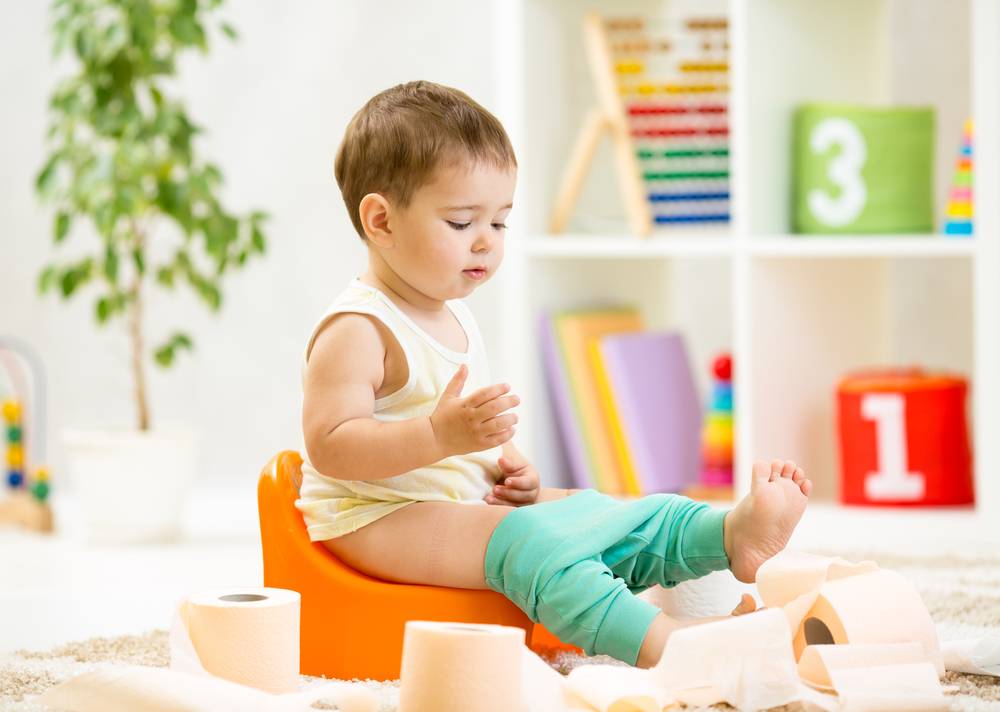Key points:
1. Plan ahead before beginning potty training, and consider methods that match your child’s readiness.
2. Child-centered approach allows child-paced training; One-Day Method involves structured training in a day.
3. Child-centered pros: easy, flexible; cons: can take weeks. One-Day pros: quick, structured; cons: requires planning.
4. AAP suggests a mix of methods; consult your pediatrician or daycare for advice and stick to your chosen method(s).
Time to say goodbye to diapers? Before you even buy your toddler a potty seat, it’s important to have a plan for the training process. Find out about two methods that may help you decide how to start this important task!
Potty training methods
Remember that there’s no single, guaranteed method for success in potty training. The key is to choose the strategy that best adapts to your child and you. We have listed some methods with their pros and cons. Check them out!
The child-centered approach or Brazelton’s method
The main focus of this method is that your child sets the pace of training, so the actual age is less important than your child’s developmental readiness. When the child is ready, parents can begin a series of “successive approximations” leading up to successful potty use.
How it works:
Before you start, you must identify if your little one is showing signs of being ready.
- The first step is taking your child to pick out their potty. They will love picking out their favorite color and will begin to have a sense of ownership over it.
- The next step is encouraging your child to sit, fully clothed, on the potty. They will begin to connect the potty with going to the bathroom.
- To encourage your little one to go, you can let them run around the house without diapers and leave the potty chair out in a visible place.
- The goal is to let them believe that potty training was their idea, not yours.
For the next steps, like emptying the potty chair into the toilet, flushing, and handwashing, you have to wait until your child shows interest in them.
Pros
- It’s very easy to follow in a busy lifestyle.
- It needs very little preparation or planning.
- It’s not a large commitment on time or consistency.
Cons
- This process can take weeks, depending on the child.
The One-Day Method
This method is based on the notion that children learn by example. Actually, “one day” refers more to the day you spend with your little one practicing how to properly use the potty. After this initial “first day”, you will spend a few days following up and trying to avoid little accidents.
How it works:
Your little one should be 20 months or older, and they should meet several developmental signs.
Before you start, you will need to set up a training area with a potty chair, a doll with a removable diaper (experts suggest using a doll that can drink and “urinate”), food treats, and drinks. Remember you will need to devote a day to training (4-6 continuous hours).
- Use the doll to demonstrate the potty routine. Give her a drink and then tell your baby that the doll has to pee. Guide them through the process of removing the doll’s diaper, sitting the doll on the potty, waiting for the doll to pee, and praising and rewarding the doll for doing so.
- Then check the doll’s diaper. If the diaper is dry, the doll gets another reward. If it’s wet, you explain that big kids don’t wet their pants.
- Repeat this exercise several times until your child understands the steps (this usually takes no more than one hour).
- Now, it’s time to try what you exemplified with the doll, with them.
The key to this potty training method is positive reinforcement and overcorrection. When kids get it right, they are rewarded. When they get it wrong (wet their pants) they perform practice drills.
Pros:
- It’s quick, typically can be done in under 2 weeks.
- It’s a structured method.
- It can work for children with special needs.
- Scientific studies suggest that most parents who attempt fast-track potty training techniques will be successful.
Cons:
- Takes planning and preparation.
- Requires to follow through.
According to the American Academy of Pediatrics (AAP), it is not necessary to choose a single method. Your child might benefit from a combination of different methods. Once you decide on a method or several, talk to your pediatrician or daycare support about it; they’ll probably have plenty of experience and advice to share. And be sure you and everyone else who takes care of your child stick to it!








